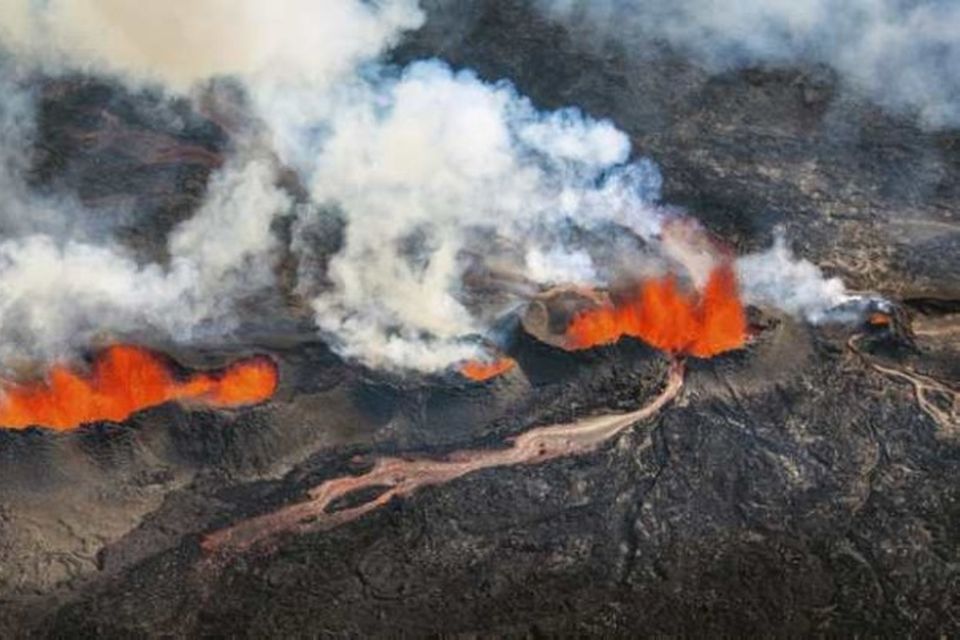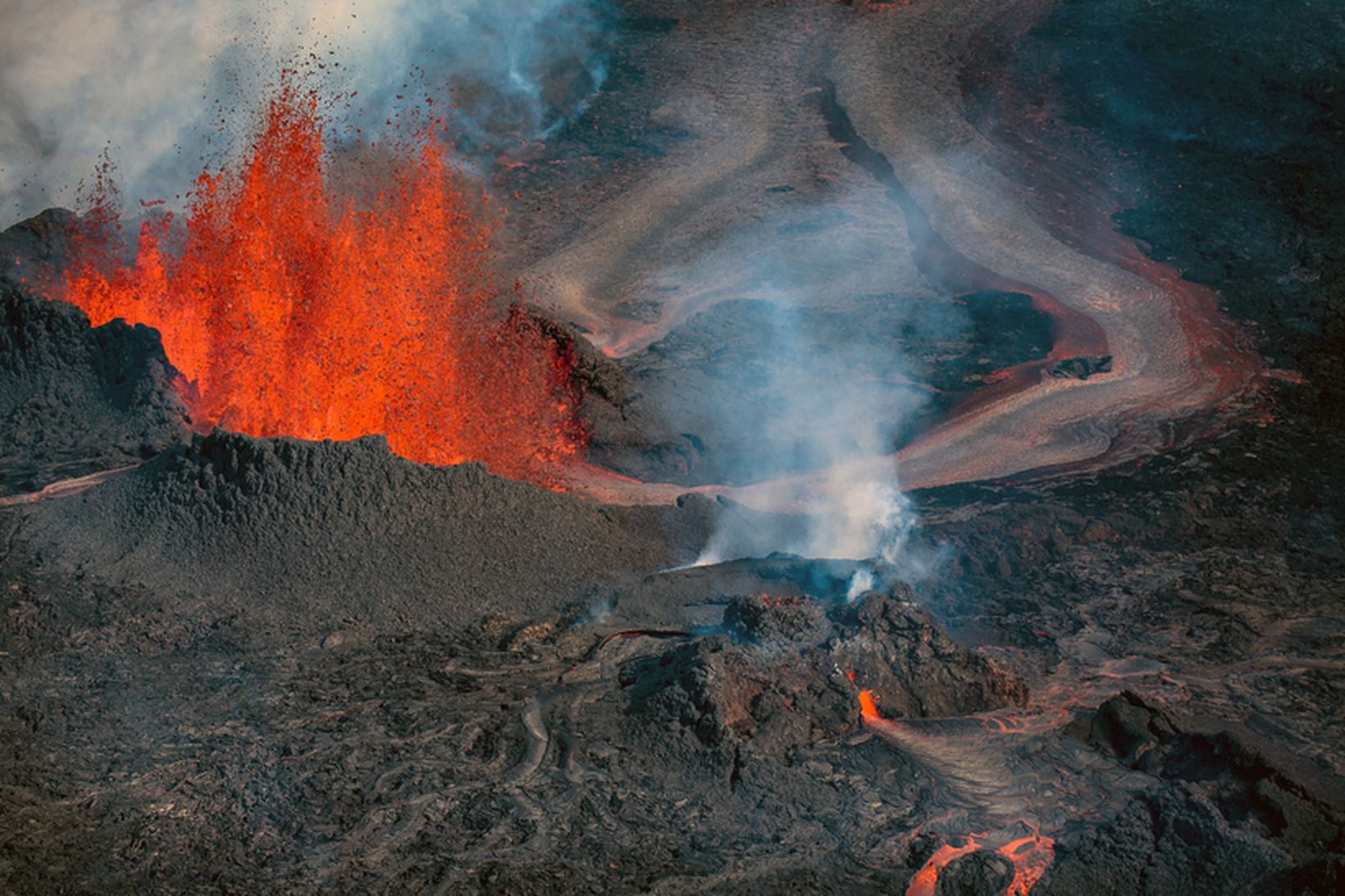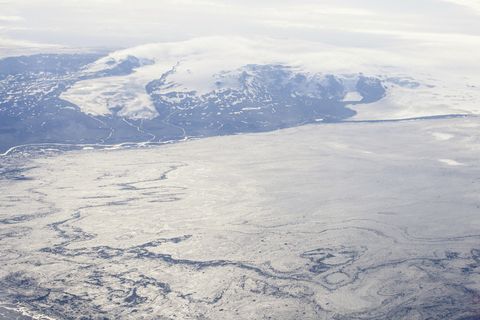A new rift closer to Dyngjujökull

Mynd 1 af 30
Gos í Holuhrauni
Árni Sæberg
Mynd 2 af 30
Gos í Holuhrauni
Árni Sæberg
Mynd 3 af 30
Gos í Holuhrauni
Árni Sæberg
Mynd 4 af 30
Gos í Holuhrauni
Árni Sæberg
Mynd 5 af 30
Gos í Holuhrauni
Árni Sæberg
Mynd 6 af 30
Gos í Holuhrauni
Árni Sæberg
Mynd 7 af 30
Gos í Holuhrauni
Árni Sæberg
Mynd 8 af 30
Gos í Holuhrauni
Árni Sæberg
Mynd 9 af 30
Gos í Holuhrauni
Árni Sæberg
Mynd 10 af 30
Gos í Holuhrauni
Árni Sæberg
Mynd 11 af 30
Gos í Holuhrauni
Árni Sæberg
Mynd 12 af 30
Gos í Holuhrauni
Árni Sæberg
Mynd 13 af 30
Gos í Holuhrauni
Árni Sæberg
Mynd 14 af 30
Gos í Holuhrauni
Árni Sæberg
Mynd 15 af 30
Gos í Holuhrauni
Árni Sæberg
Mynd 16 af 30
Gos í Holuhrauni
Árni Sæberg
Mynd 17 af 30
Gos í Holuhrauni
Árni Sæberg
Mynd 18 af 30
Gos í Holuhrauni
Árni Sæberg
Mynd 19 af 30
Gos í Holuhrauni
Árni Sæberg
Mynd 20 af 30
Gos í Holuhrauni
Árni Sæberg
Mynd 21 af 30
Gos í Holuhrauni
Árni Sæberg
Mynd 22 af 30
Gos í Holuhrauni
Árni Sæberg
Mynd 23 af 30
Gos í Holuhrauni
Árni Sæberg
Mynd 24 af 30
Gos í Holuhrauni
Árni Sæberg
Mynd 25 af 30
Gos í Holuhrauni
Árni Sæberg
Mynd 26 af 30
Gos í Holuhrauni
Árni Sæberg
Mynd 27 af 30
Gos í Holuhrauni
Árni Sæberg
Mynd 28 af 30
Gos í Holuhrauni
Árni Sæberg
Mynd 29 af 30
Gos í Holuhrauni
Árni Sæberg
Mynd 30 af 30
Gos í Holuhrauni
Árni Sæberg
The original fissure is more powerful than the new one.
mbl.is/Árni Sæberg
At about 7:00 UTC this morning reports came in that new eruptive fissures had opened to the south of the on-going eruption.
At 8:30, a surveillance flight with scientists from the IMO and University of Iceland observed the following:
- Two new eruptive fissures formed south of the previous eruption site in Holuhraun, in a graben, that had formed above the intrusion, about 2km away from Dyngjujökull.
- The eruptive fire fountains from the new fissures are substantially smaller than in the older fissure. Steam and gas rises in a south eastern direction from the fissure.
- The cauldron in Dyngjujökull seems to have grown deeper since the last observation.
- No changes are visible in Bárðarbunga.
- Substantial amounts of SO2 are still being released to the atmosphere in association with the eruption.
- Conductivity measurements show a slight increase in conductivity in Jökulsá á Fjöllum, indication more waterflow.
- Some tremor was detected on seismometers shortly after 3:00 UTC last night. It decreased at about 6:00 UTC this morning.
- Considerable activity is in the northern fissure (fissure 1) and the height of the steam cloud is about 15,000 feet.
There are no indications of the eruption in Holuhraun being in decline. The lava from fissure 1 continues to flow to the east north east and has grown in area since yesterday.
- Seismicity in the area is similar to yesterday’s activity. About 170 earthquakes were detected since midnight. Two earthquakes of magnitudes 4,4 and 5,3 were detected in the Bárðarbunga caldera region at around midnight UTC.
- GPS displacements have continues to decrease and are now within uncertainty limits.
- Four scenarios are still likely:
- The migration of magma could stop, resulting in a gradual reduction in seismic activity and no further eruptions.
- The dike could reach the Earth’s surface at different locations outside the glacier. Lava flow and/or explosive activity cannot be excluded.
- The intrusion reaches the surface and another eruption occurs where either the fissure is partly or entirely beneath Dyngjujökull. This would most likely produce a flood in Jökulsá á Fjöllum and perhaps explosive, ash-producing activity.
- An eruption in Bárðarbunga. The eruption could cause an outburst flood and possibly an explosive, ash-producing activity. In the event of a subglacial eruption, it is most likely that flooding would affect Jökulsá á Fjöllum. However it is not possible to exclude the following flood paths: Skjálfandafljót, Kaldakvísl, Skaftá and Grímsvötn.
Other scenarios cannot be ruled out.
From the Icelandic Met Office:
The Aviation Colour Code for Bárðarbunga remains at ‘orange’ and the code for Askja at ‘yellow’.
- A burst of small earthquakes yesterday
- Blue Lagoon closed yesterday until 2 today
- The wall of the crater has collapsed
- 8 months pregnant and deadlifts 135 kilos
- A month since the eruption began
- Strengthening the ties with Scotland
- The first real estate purchase agreements for Grindavík went through yesterday
- Earthquake felt in the capital area with many aftershocks
- The magma chamber is not as deep as previously thought
- Live footage: Magma running down from the overflowing crater
- A burst of small earthquakes yesterday
- The first real estate purchase agreements for Grindavík went through yesterday
- The wall of the crater has collapsed
- The inflation is moving westward
- Blue Lagoon closed yesterday until 2 today
- Earthquake felt in the capital area with many aftershocks
- The magma chamber is not as deep as previously thought
- Strengthening the ties with Scotland
- Opened the road to Grindavík for residents and first responders
- Live footage: Magma running down from the overflowing crater
- The wall of the crater has collapsed
- The magma chamber is not as deep as previously thought
- Live footage: Magma running down from the overflowing crater
- A burst of small earthquakes yesterday
- This eruption already more extensive than previous six eruptions
- The Blue Lagoon is closed today due to gas pollution
- Opened the road to Grindavík for residents and first responders
- The first real estate purchase agreements for Grindavík went through yesterday
- Earthquake felt in the capital area with many aftershocks
- Suspicious men in yellow vests peeking through windows
Iceland Monitor — Fleiri fréttir
Í dag
Í gær
Laugardaginn 13. apríl
Föstudaginn 12. apríl
Fimmtudaginn 11. apríl
Miðvikudaginn 10. apríl
Þriðjudaginn 9. apríl
Mánudaginn 8. apríl
Sunnudaginn 7. apríl
Laugardaginn 6. apríl
Föstudaginn 5. apríl
Fimmtudaginn 4. apríl
Miðvikudaginn 3. apríl
Þriðjudaginn 2. apríl
Mánudaginn 1. apríl
Laugardaginn 30. mars
Föstudaginn 29. mars
Fimmtudaginn 28. mars
Miðvikudaginn 27. mars
Þriðjudaginn 26. mars
Mánudaginn 25. mars
Sunnudaginn 24. mars
Laugardaginn 23. mars
Föstudaginn 22. mars
- A burst of small earthquakes yesterday
- Blue Lagoon closed yesterday until 2 today
- The wall of the crater has collapsed
- 8 months pregnant and deadlifts 135 kilos
- A month since the eruption began
- Strengthening the ties with Scotland
- The first real estate purchase agreements for Grindavík went through yesterday
- Earthquake felt in the capital area with many aftershocks
- The magma chamber is not as deep as previously thought
- Live footage: Magma running down from the overflowing crater
- A burst of small earthquakes yesterday
- The first real estate purchase agreements for Grindavík went through yesterday
- The wall of the crater has collapsed
- The inflation is moving westward
- Blue Lagoon closed yesterday until 2 today
- Earthquake felt in the capital area with many aftershocks
- The magma chamber is not as deep as previously thought
- Strengthening the ties with Scotland
- Opened the road to Grindavík for residents and first responders
- Live footage: Magma running down from the overflowing crater
- The wall of the crater has collapsed
- The magma chamber is not as deep as previously thought
- Live footage: Magma running down from the overflowing crater
- A burst of small earthquakes yesterday
- This eruption already more extensive than previous six eruptions
- The Blue Lagoon is closed today due to gas pollution
- Opened the road to Grindavík for residents and first responders
- The first real estate purchase agreements for Grindavík went through yesterday
- Earthquake felt in the capital area with many aftershocks
- Suspicious men in yellow vests peeking through windows


































